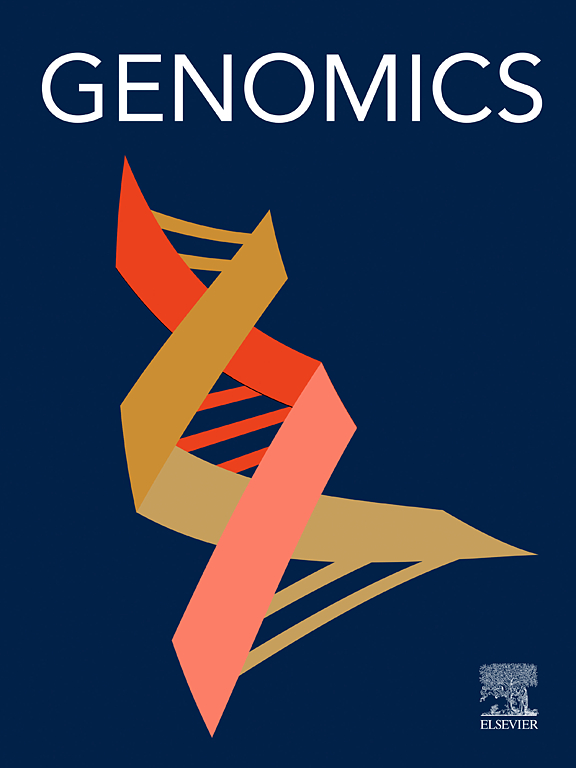解读肾小球盐藻线粒体全基因组结构特征和RNA编辑事件
IF 3
2区 生物学
Q2 BIOTECHNOLOGY & APPLIED MICROBIOLOGY
引用次数: 0
摘要
紫花苋属盐生植物,能很好地适应极端的盐碱环境。为了更好地了解其在基因组水平上的适应机制,我们组装并分析了H. glomeratus的线粒体全基因组(mitogenome)。提取基因组DNA,构建文库进行Illumina短读测序和Oxford Nanopore长读测序。使用GetOrganelle、PMAT和Unicycler的混合策略组装有丝分裂基因组,并通过CPGAVAS2、CPGView和PMGA web服务器进行基因注释。最后的组装揭示了一个由三条染色体组成的多部有丝分裂基因组:两条环状染色体(168,414 bp和144,793 bp)和一条额外的染色体(19,991 bp)在本分析中被视为线性,尽管可能存在其他构型。鉴定出12条线粒体质体DNA (MTPT)序列,占有丝分裂基因组的0.75%,序列长度和组成与近缘种相比存在较大差异。基于35个有丝分裂基因组的系统发育分析证实了其在苋科植物中的进化地位。此外,在28个蛋白质编码基因(pcg)中鉴定出354个RNA编辑位点,在35个不同的开放阅读框(orf)中检测到136个编辑位点,包括产生新的开始和停止密码子的事件。肾小球有丝分裂基因组具有复杂的结构组织和胞间序列迁移。这些发现为线粒体基因组进化提供了有价值的见解,并可能有助于理解盐生植物适应的分子机制。本文章由计算机程序翻译,如有差异,请以英文原文为准。
Deciphering the complete mitochondrial genome of Halogeton glomeratus structural features and RNA editing events
Halogeton glomeratus, a halophytic species in the Amaranthaceae family, is well adapted to extreme saline-alkaline environments. To better understand its adaptive mechanisms at the genomic level, we assembled and analyzed the complete mitochondrial genome (mitogenome) of H. glomeratus. The genomic DNA was extracted and libraries were constructed for Illumina short-read and Oxford Nanopore long-read sequencing. The mitogenome was assembled using a hybrid strategy combining GetOrganelle, PMAT, and Unicycler, with gene annotation performed via CPGAVAS2, CPGView, and the PMGA web server. The final assembly revealed a multipartite mitogenome comprising three chromosomes: two circular chromosomes (168,414 bp and 144,793 bp) and one additional chromosome (19,991 bp) treated as linear in this analysis, although alternative configurations may exist. Twelve mitochondrial plastid DNA (MTPT) sequences were identified, accounting for 0.75 % of the mitogenome, with considerable variation in sequence length and composition compared to related species. Phylogenetic analysis based on 35 mitogenomes confirmed the evolutionary position of H. glomeratus within Amaranthaceae. Furthermore, 354 RNA editing sites were identified in 28 protein-coding genes (PCGs), and 136 editing sites were detected in 35 distinct open reading frames (ORFs), including events that generated novel start and stop codons. The H. glomeratus mitogenome exhibits complex structural organization and inter-organellar sequence migration. These findings offer valuable insights into mitochondrial genome evolution and may contribute to understanding the molecular mechanisms underlying halophyte adaptation.
求助全文
通过发布文献求助,成功后即可免费获取论文全文。
去求助
来源期刊

Genomics
生物-生物工程与应用微生物
CiteScore
9.60
自引率
2.30%
发文量
260
审稿时长
60 days
期刊介绍:
Genomics is a forum for describing the development of genome-scale technologies and their application to all areas of biological investigation.
As a journal that has evolved with the field that carries its name, Genomics focuses on the development and application of cutting-edge methods, addressing fundamental questions with potential interest to a wide audience. Our aim is to publish the highest quality research and to provide authors with rapid, fair and accurate review and publication of manuscripts falling within our scope.
 求助内容:
求助内容: 应助结果提醒方式:
应助结果提醒方式:


